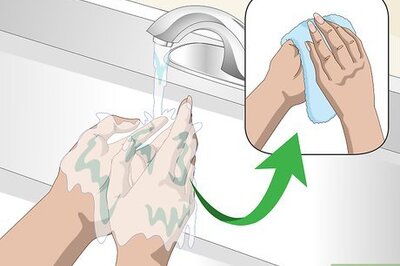
views
Los Angeles: A Madrid museum cannot be forced to return a Camille Pissarro painting that was seized by the Nazis from its Jewish owners during World War Two, despite the institution's failure to honor its "moral commitments," a federal judge in California has ruled.
U.S. District Judge John Walter said he was bound by Spanish law in the nearly two-decade fight between heirs of Lilly Cassirer and the Thyssen-Bornemisza Collection (TBC) over the Paris street scene painted by Pissarro in 1897.
"(The) court has no alternative but to apply Spanish law and cannot force the Kingdom of Spain or TBC to comply with its moral commitments," Walter said in a 34-page ruling issued in his chambers in Los Angeles on Tuesday.
"Accordingly, after considering all of the evidence and arguments of the parties, the court concludes that TBC is the lawful owner of the painting," Walter wrote, because the museum purchased it in good faith from a Swiss industrialist.
Lilly Cassirer, who inherited "Rue Saint-Honoré, Après-midi. Effet de Pluie," from her family in 1926, was forced to surrender the Impressionist painting to the Nazis in 1939 in order to obtain exit visas from Germany following Kristallnacht, the night of Nov. 9–10, 1938, when Nazis persecuted Jews and seized their property.
The artwork, which was later confiscated by the Gestapo, resurfaced in the United States in 1951, where it remained until it was purchased by the Baron Hans Heinrich Thyssen-Bornemisza for $300,000 in 1976.
Thyssen-Bornemisza's collection became the basis for the collection at the popular Museo Thyssen-Bornemisza in Madrid.
YEARS OF LITIGATION
Walter said in his ruling that while the baron, as a sophisticated art collector, should have recognized the "red flags" around the painting's provenance, there was no proof that he or the Madrid-based museum knew it had been stolen by the Nazis.
The Cassirer family believed that the painting had been destroyed or lost in the war until Lilly's heir, Claude, learned in 2000 that it was on display at the museum and filed a claim for its return.
After Spain rejected that petition in 2005, family members sued the museum in U.S. District Court in California, touching off years of litigation.
In his ruling, Walter said the museum's refusal to return the painting was "inconsistent" with the 1998 Washington Principles on Nazi-Confiscated Art signed by Spain and 43 other countries in which they committed to make restitution to the descendants of people whose art was looted during the war.
On its website, the museum describes "Rue Saint-Honore" as one in a series of paintings Pissarro created from his Paris hotel room during the winter of 1897 and 1898 while the impressionist was in ill health.



















Comments
0 comment